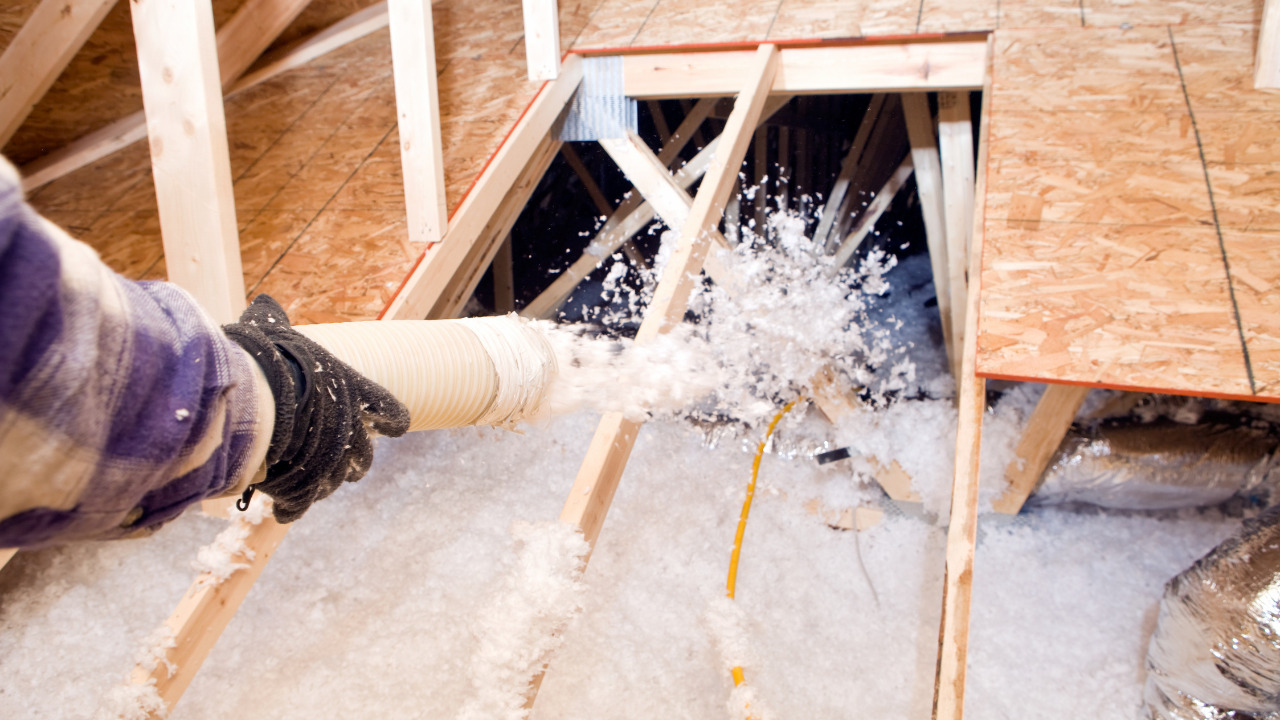Insulation in your basement crawl space can improve the efficiency of your entire home. Here’s how to set it up in your home. You’re sure to find a few things in your crawl area that make you feel uneasy.
Many individuals are afraid of snakes and spiders, and both are probable residents in such a dark, enclosed environment. Fiberglass is known for being scratchy, but it’s also filthy and likely moist now.
Even after the worst rains, the encapsulation and insulation processes can help keep your crawl area dry. The true difficulty comes in determining which procedure to use.
In this post, we’ll go over why fiberglass insulation is a bad choice for a crawl space, how to replace it, and what indicators suggest that your floor’s wooden framework needs to be repaired.
Table of Contents
When Do You Need To Remove Insulation From Crawl Space?
Suppose you’ve put fiberglass insulation. Fiberglass insulation was once thought to be the optimum answer by builders, and it was the most often used type of insulation. However, the time has proven that this is not a good idea. Fiberglass insulation absorbs much water.
Even if you don’t have a water problem in your crawl area, that won’t keep your insulation dry. Humidity alone can be enough to cause the insulation to become damp. When it becomes wet, the difficulties begin.
The insulation was crammed between the wooden floor joists when it was installed. The planks are now forced up against moist stuff. When wood is wet, it rots and becomes a perfect termite habitat. That combination is also a wonderful place for mold to grow.
Your flooring structure is now weakened due to mold and rot. And it’s at this point that the stability of your house, the health of your family, and your wallet all begin to suffer.
What Are The Benefits Of Insulating Crawl Space?
By keeping hot and cold air from entering and departing your home, proper insulation in your crawl area, together with air sealing and insulation throughout your home, can help keep your home more pleasant throughout the year.
It can also help you avoid moisture build-up, which can undermine your home’s structural integrity and lead to mold and mildew issues.
A well-sealed, insulated, and ventilated home can help enhance your indoor air quality by keeping allergies and other contaminants out of your home.
Furthermore, by making your home airtight, you may decrease access sites for rodents and other pests, save money on exterminators and repairs, as well as avoid diseases brought into your home by infestations.
Crawlspace insulation can keep your pipes from freezing in the winter, potentially saving you hundreds of dollars in plumbing repairs.
How To Deal With The Issues After Insulation Removal?
If you decide to remove the fiberglass insulation yourself, be sure to take precautions. If you get the insulation fibers on your skin, in your eyes, or your lungs, they will irritate you severely. A mask and goggles are recommended while removing the insulation from the crawl space.
Check For The Mold After Insulation Removal
After you’ve removed the insulation, inspect all of the joists and beams for any signs of damage. Mold is quite evident; if you’ve ever left something in the refrigerator for an extended period, you’ll recognize it.
Identify Insect Damage
Insect damage is sometimes more difficult to spot. Termites aren’t normally visible, but if the wood is flaking or bubbling, it’s a sign that the insects are tunneling beneath the surface. If you believe you have termites or other insects, you should get a professional exterminator.
If you’ve neglected your crawl space insulation for a long time, you should hire an insulation contractor to conduct a thorough inspection.
If you’re having new crawl space insulation installed, make sure specialists do it to perform correct insulating measures.
You’ll have many difficulties down the line if your crawl space insulation isn’t built with proper moisture mitigation methods in place. When insulating a vented crawl space, you’ll need a technique to keep moisture from forming on the subfloor.
Check For The Structural Issues
The presence of flaking or pitting on the beam indicates that the wood has begun to weaken. Rot will result as a result of this. Even if the board isn’t outwardly damaged, you should inspect it if it’s damp or contains mold. The best way to achieve this is to poke the wood with a screwdriver or pocket knife.
Wooden components that have been damaged must be fixed as soon as feasible. The longer these repairs are postponed, the more serious the problem becomes. It is significantly less expensive to replace a few floor joists than to replace the entire floor.
Uninstall The Old Insulation Before Adding The New One
After you’ve stopped all obvious leaks, you’ll need to remove any old insulation from your crawl area. Why not reuse it instead of removing it? Because your previous insulation may have been harmed due to long-term leak exposure.
In addition to releasing allergens into your house, damaged insulation provides a breeding environment for mold strains. It’s best to toss it out and replace it with something more sanitary.
Speaking of which, once you’ve removed your old insulation, you may replace it with watertight insulation. If you’re unsure where to begin when selecting a brand or type of material, speak with your contractor.
Conclusion
While a capable person could install crawl space insulation, you might want to hire a professional. They’ll clean up and dispose of old insulation correctly, and they’ll frequently treat the area with bacteria and fungicides. If you have a crawl space in your house, have it properly evaluated by the specialists at Attic Construction!
While it may be tempting to overlook your crawl space, inefficient or improperly constructed insulation can have a negative influence on your home’s energy efficiency, durability, and indoor air quality.





